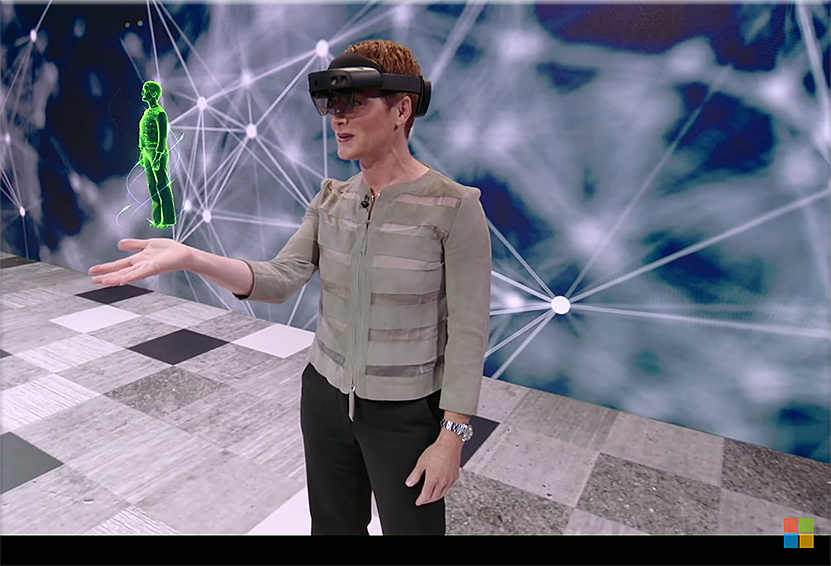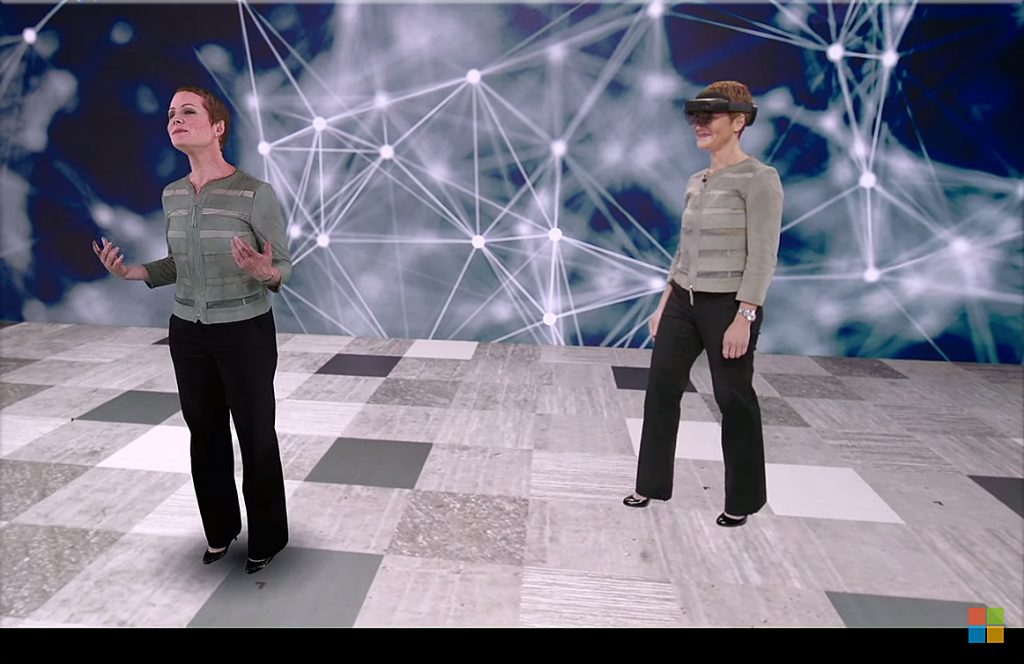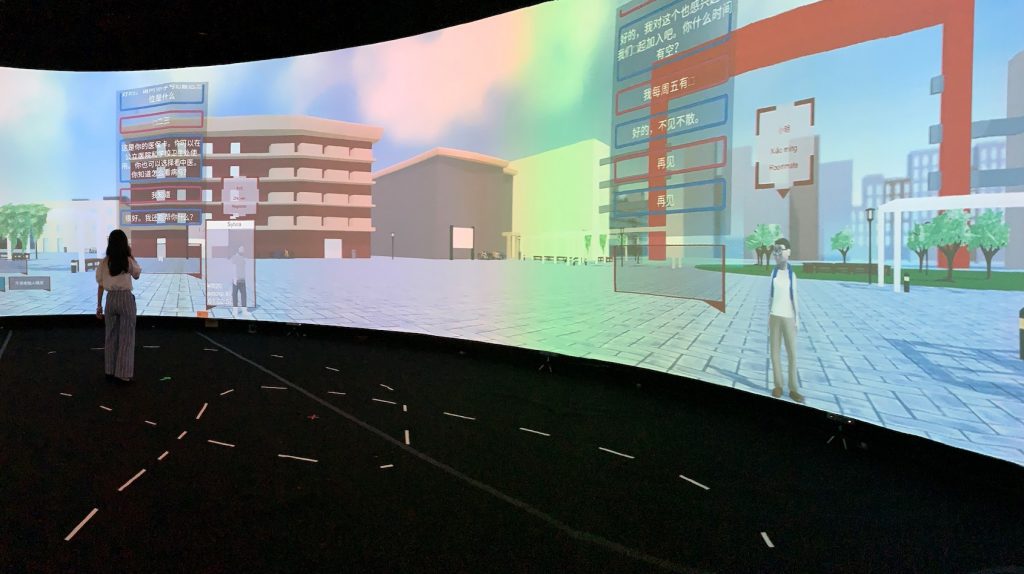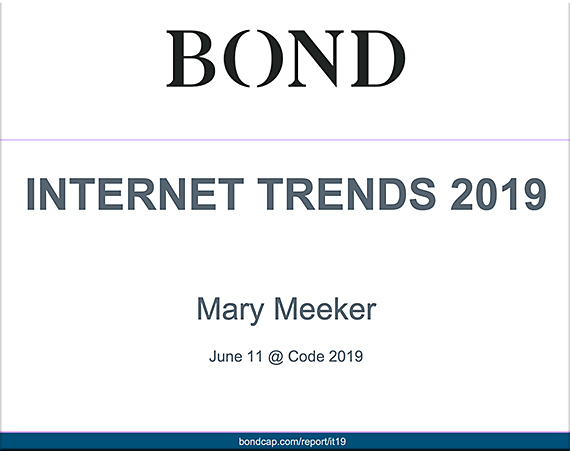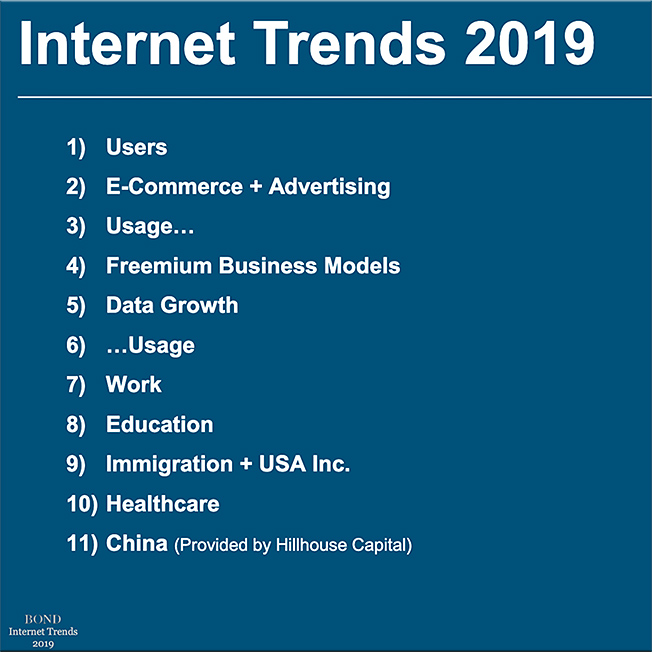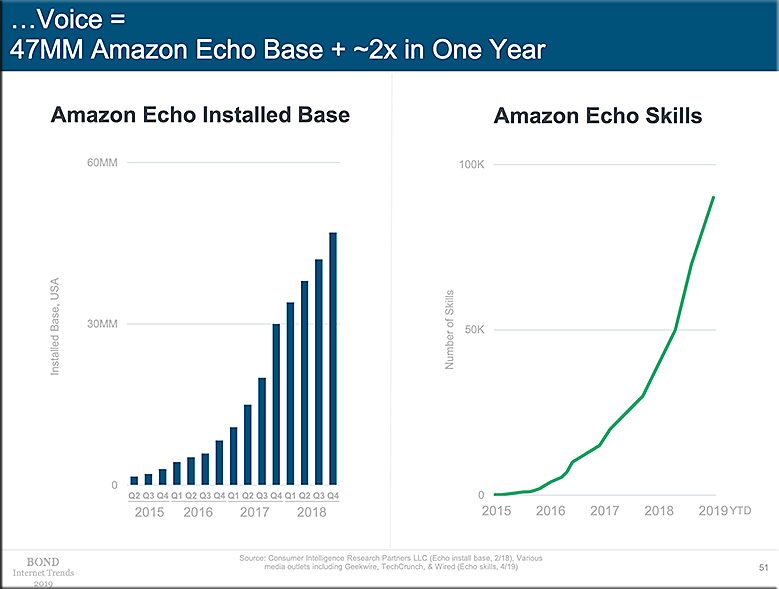
From DSC:
Alexa is up to 100,000 skills. How might these types of techs be integrated into education, training, learning spaces, collaboration, other?
Celebrating 100,000 Alexa Skills -100,000 Thank Yous to You — from developer.amazon.com
An artificial-intelligence first: Voice-mimicking software reportedly used in a major theft — from washingtonpost.com by Drew Harwell
Excerpt:
Thieves used voice-mimicking software to imitate a company executive’s speech and dupe his subordinate into sending hundreds of thousands of dollars to a secret account, the company’s insurer said, in a remarkable case that some researchers are calling one of the world’s first publicly reported artificial-intelligence heists.
The managing director of a British energy company, believing his boss was on the phone, followed orders one Friday afternoon in March to wire more than $240,000 to an account in Hungary, said representatives from the French insurance giant Euler Hermes, which declined to name the company.
From DSC:
Needless to say, this is very scary stuff here! Now what…? Who in our society should get involved to thwart this kind of thing?
- Programmers?
- Digital audio specialists?
- Legislators?
- Lawyers?
- The FBI?
- Police?
- Other?
Addendum on 9/12/19:
- Watch Out For That Email From Management: The Latest Scams Targeting Lawyers — from by Hannah Roberts
Several firms have been targeted by phishing scams in recent months, but why are cyber criminals so drawn to law firms and how can management safeguard their businesses?
Alexa Skill Blueprints Publishing Now Available in Australia and New Zealand – Create and Publish a Skill, No Coding Required— from developer.amazon.com by James Ang
Excerpt:
We are excited to announce that now anyone can create and publish an Alexa skill on the Australian Alexa Skills Store using Alexa Skill Blueprints. Skill Blueprints enable you to create and share customised Alexa skills simply by filling in the blanks to one of the dozens of easy-to-use templates, with no coding required. Now you can publish skills created using Alexa Skill Blueprints to the Alexa Skills Store in Australia for customers to discover and use. We have also built new Skill Blueprints specifically for content creators, bloggers, and organisations so they can reach anyone with an Alexa-enabled device.
…
Create Fun Learning Tools
Whether you are a parent helping your child study or want to teach something you’re passionate about, Blueprints are easy tools to create new ways to learn. Use the Quiz, Flashcards, Facts, and Listening Quiz Blueprints to help teach new concepts, retain information, and prepare for the next exam. Add your content into the Skill Blueprint template without the need for any coding and make learning fun for everyone.
DC: Holy smokes!!! How might this be applied to education/learning/training in the 21st century!?!
“What if neither distance nor language mattered? What if technology could help you be anywhere you need to be and speak any language? Using AI technology and holographic experiences this is possible, and it is revolutionary.”
Also see:
Microsoft has a wild hologram that translates HoloLens keynotes into Japanese — from theverge.com by Tom Warren
Azure and HoloLens combine for a hint at the future
Excerpt:
Microsoft has created a hologram that will transform someone into a digital speaker of another language. The software giant unveiled the technology during a keynote at the Microsoft Inspire partner conference [on 7/17/19] in Las Vegas. Microsoft recently scanned Julia White, a company executive for Azure, at a Mixed Reality capture studio to transform her into an exact hologram replica.
The digital version appeared onstage to translate the keynote into Japanese. Microsoft has used its Azure AI technologies and neural text-to-speech to make this possible. It works by taking recordings of White’s voice, in order to create a personalized voice signature, to make it sound like she’s speaking Japanese.
A new immersive classroom uses AI and VR to teach Mandarin Chinese — from technologyreview.com by Karen Hao
Students will learn the language by ordering food or haggling with street vendors on a virtual Beijing street.
Excerpt:
Often the best way to learn a language is to immerse yourself in an environment where people speak it. The constant exposure, along with the pressure to communicate, helps you swiftly pick up and practice new vocabulary. But not everyone gets the opportunity to live or study abroad.
In a new collaboration with IBM Research, Rensselaer Polytechnic Institute (RPI), a university based in Troy, New York, now offers its students studying Chinese another option: a 360-degree virtual environment that teleports them to the busy streets of Beijing or a crowded Chinese restaurant. Students get to haggle with street vendors or order food, and the environment is equipped with different AI capabilities to respond to them in real time.
Top 10 Digital Transformation Trends For 2020 –from forbes.com by Daniel Newman
Excerpt (emphasis DSC):
A faster WiFi for a faster world: Although WiFi 6 and 5G are completely different technologies, both will be bringing us much faster processing and wireless connection speeds in 2020. 5G and WiFi 6 working in concert will create the perfect end-to-end combination of ultra-fast connectivity for home and office. Expect download speeds up to 3x faster than were achievable with WiFi 5, but that isn’t the best measure of the new standard’s value. The real value of WiFi 6 will be its ability to extend faster data speeds to far more devices than WiFi 5 was able to manage.
Microsoft’s new AI wants to help you crush your next presentation — from pcmag.com by Jake Leary
PowerPoint is receiving a slew of updates, including one that aims to help you improve your public speaking.
Excerpt:
Microsoft [on 6/18/19] announced several PowerPoint upgrades, the most notable of which is an artificial intelligence tool that aims to help you overcome pre-presentation jitters.
The Presenter Coach AI listens to you practice and offers real-time feedback on your pace, word choice, and more. It will, for instance, warn you if you’re using filler words like “umm” and “ahh,” profanities, non-inclusive language, or reading directly from your slides. At the end of your rehearsal, it provides a report with tips for future attempts. Presenter Coach arrives later this summer.
Do you have a virtual personal assistant? With #VoiceAssistants we might get time back to do what we want to do. Tech giants believe that voice is as big as touchscreen and will invest a lot in the further development. #Microsoft #Google https://t.co/uPqkKyiPT3 pic.twitter.com/IjeVn5Af4p
— Wynter (@WynterElwood) June 17, 2019
Also see:
Microsoft is building a virtual assistant for work. Google is building one for everything else — from qz.com by Dave Gershgorn
Excerpts:
In the early days of virtual personal assistants, the goal was to create a multipurpose digital buddy—always there, ready to take on any task. Now, tech companies are realizing that doing it all is too much, and instead doubling down on what they know best.
…
Since the company has a deep understanding of how organizations work, Microsoft is focusing on managing your workday with voice, rearranging meetings and turning the dials on the behemoth of bureaucracy in concert with your phone.
Voice is the next major platform, and being first to it is an opportunity to make the category as popular as Apple made touchscreens. To dominate even one aspect of voice technology is to tap into the next iteration of how humans use computers.
From DSC:
What affordances might these developments provide for our future learning spaces?
Will faculty members’ voices be recognized to:
- Sign onto the LMS?
- Dim the lights?
- Turn on the projector(s) and/or display(s)?
- Other?
Will students be able to send the contents of their mobile devices to particular displays via their voices?
Will voice be mixed in with augmented reality (i.e., the students and their devices can “see” which device to send their content to)?
Hmmm…time will tell.
Is your college future-ready? — from jisc.ac.uk by Robin Ghurbhurun
Excerpt:
Artificial intelligence (AI) is increasingly becoming science fact rather than science fiction. Alexa is everywhere from the house to the car, Siri is in the palm of your hand and students and the wider community can now get instant responses to their queries. We as educators have a duty to make sense of the information out there, working alongside AI to facilitate students’ curiosities.
Instead of banning mobile phones on campus, let’s manage our learning environments differently
…
We need to plan strategically to avoid a future where only the wealthy have access to human teachers, whilst others are taught with AI. We want all students to benefit from both. We should have teacher-approved content from VLEs and AI assistants supporting learning and discussion, everywhere from the classroom to the workplace. Let’s learn from the domestic market; witness the increasing rise of co-bot workers coming to an office near you.
Stanford team aims at Alexa and Siri with a privacy-minded alternative — from nytimes.com by John Markoff
Excerpt:
Now computer scientists at Stanford University are warning about the consequences of a race to control what they believe will be the next key consumer technology market — virtual assistants like Amazon’s Alexa and Google Assistant.
The group at Stanford, led by Monica Lam, a computer systems designer, last month received a $3 million grant from the National Science Foundation. The grant is for an internet service they hope will serve as a Switzerland of sorts for systems that use human language to control computers, smartphones and internet devices in homes and offices.
The researchers’ biggest concern is that virtual assistants, as they are designed today, could have a far greater impact on consumer information than today’s websites and apps. Putting that information in the hands of one big company or a tiny clique, they say, could erase what is left of online privacy.
Amazon sends Alexa developers on quest for ‘holy grail of voice science’ — from venturebeat.com by Khari Johnson
Excerpt:
At Amazon’s re:Mars conference last week, the company rolled out Alexa Conversations in preview. Conversations is a module within the Alexa Skills Kit that stitches together Alexa voice apps into experiences that help you accomplish complex tasks.
Alexa Conversations may be Amazon’s most intriguing and substantial pitch to voice developers in years. Conversations will make creating skills possible with fewer lines of code. It will also do away with the need to understand the many different ways a person can ask to complete an action, as a recurrent neural network will automatically generate dialogue flow.
For users, Alexa Conversations will make it easier to complete tasks that require the incorporation of multiple skills and will cut down on the number of interactions needed to do things like reserve a movie ticket or order food.
From DSC:
Re: the Learning from the Living [Class] Room vision of a next gen learning platform…
…wouldn’t it be cool if you could use your voice to ask your smart/connected “TV” type of device:
“Show me the test questions for Torts I from WMU-Cooley Law School. Cooley could then charge $0.99 for these questions.”
Then, the system knows how you did on answering those questions. The ones you got right, you don’t get asked to review as often as the ones you got wrong. As you get a question right more often, the less you are asked to answer it.
You sign up for such streams of content — and the system assesses you periodically. This helps a person keep certain topics/information fresh in their memory. This type of learning method would be incredibly helpful for students trying to pass the Bar or other types of large/summative tests — especially when a student has to be able to recall information that they learned over the last 3-5 years.
Come to think of it…this method could help all of us in learning new disciplines/topics throughout our lifetimes. Sign up for the streams of content that you want to learn more about…and drop the (no-longer relevant) subscriptions as needed..

Microsoft debuts Ideas in Word, a grammar and style suggestions tool powered by AI — from venturebeat.com by Kyle Wiggers; with thanks to Mr. Jack Du Mez for his posting on this over on LinkedIn
Excerpt:
The first day of Microsoft’s Build developer conference is typically chock-full of news, and this year was no exception. During a keynote headlined by CEO Satya Nadella, the Seattle company took the wraps off a slew of updates to Microsoft 365, its lineup of productivity-focused, cloud-hosted software and subscription services. Among the highlights were a new AI-powered grammar and style checker in Word Online, dubbed Ideas in Word, and dynamic email messages in Outlook Mobile.
Ideas in Word builds on Editor, an AI-powered proofreader for Office 365 that was announced in July 2016 and replaced the Spelling & Grammar pane in Office 2016 later that year. Ideas in Words similarly taps natural language processing and machine learning to deliver intelligent, contextually aware suggestions that could improve a document’s readability. For instance, it’ll recommend ways to make phrases more concise, clear, and inclusive, and when it comes across a particularly tricky snippet, it’ll put forward synonyms and alternative phrasings.
Also see:
- How Microsoft is shaping the future of your office — from finance.yahoo.com by Daniel Howley
Excerpt:
The new tech includes:- Augmented Reality meetings
- Advanced digital voice assistants
- Enhanced speech recognition technologies
- Microsoft Releases Blockchain Manager App
Excerpt:
The new blockchain-as-a-service (BaaS) platform will purportedly allow users to build blockchain applications on preconfigured network.
Microsoft rolls out healthcare bot: How it will change healthcare industry — from yourtechdiet.com by Brian Curtis
Excerpt:
AI and the Healthcare Industry
This technology is evidently the game changer in the healthcare industry. According to the reports by Frost & Sullivan, the AI market for healthcare is likely to experience a CAGR of 40% by 2021, and has the potential to change industry outcomes by 30-40%, while cutting treatment costs in half.
In the words of Satya Nadella, “AI is the runtime that is going to shape all of what we do going forward in terms of the applications as well as the platform advances”.
Here are a few ways Microsoft’s Healthcare Bot will shape the Healthcare Industry…
Also see:
- Why AI will make healthcare personal — from weforum.org by Peter Schwartz
Excerpt:
Digital assistants to provide a 24/7 helping hand
The digital assistants of the future will be full-time healthcare companions, able to monitor a patient’s condition, transmit results to healthcare providers, and arrange virtual and face-to-face appointments. They will help manage the frequency and dosage of medication, and provide reliable medical advice around the clock. They will remind doctors of patients’ details, ranging from previous illnesses to past drug reactions. And they will assist older people to access the care they need as they age, including hospice care, and help to mitigate the fear and loneliness many elderly people feel.
- Introducing New Alexa Healthcare Skills — from developer.amazon.com by Rachel Jiang
Excerpts:
The new healthcare skills that launched today are:Express Scripts (a leading Pharmacy Services Organization)
Cigna Health Today (by Cigna, the global health service company)
My Children’s Enhanced Recovery After Surgery (ERAS) (by Boston Children’s Hospital, a leading children’s hospital)
Swedish Health Connect (by Providence St. Joseph Health, a healthcare system with 51 hospitals across 7 states and 829 clinics)
Atrium Health (a healthcare system with more than 40 hospitals and 900 care locations throughout North and South Carolina and Georgia)
Livongo (a leading consumer digital health company that creates new and different experiences for people with chronic conditions)
Voice as the Next Frontier for Conveniently Accessing Healthcare Services
- Got health care skills? Big Tech wants to hire you — from linkedin.com Jaimy Lee
Excerpt:
As tech giants like Amazon, Apple and Google place bigger and bigger bets on the U.S. health care system, it should come as no surprise that the rate at which they are hiring workers with health care skills is booming.We took a deep dive into the big tech companies on this year’s LinkedIn Top Companies list in the U.S., uncovering the most popular health care skills among their workers — and what that says about the future of health care in America.









